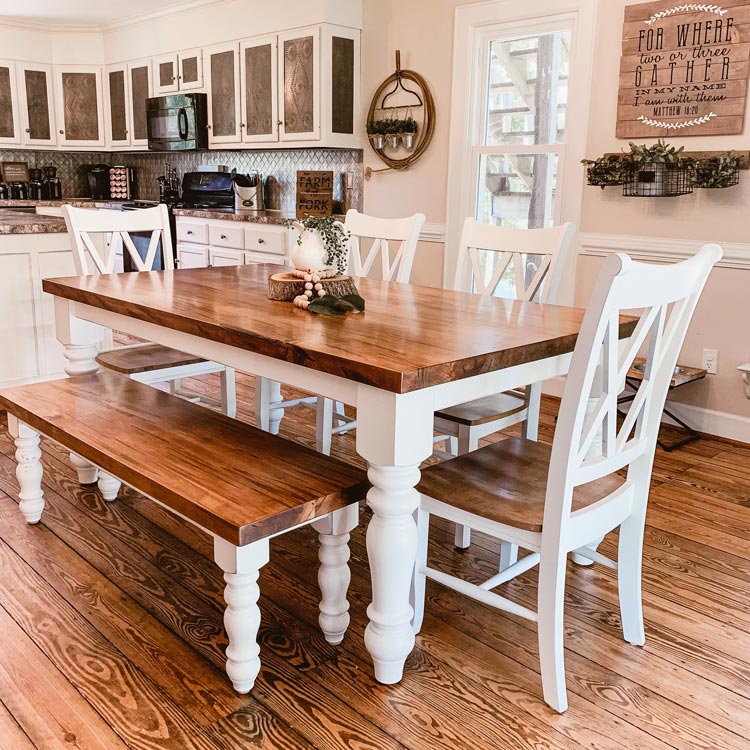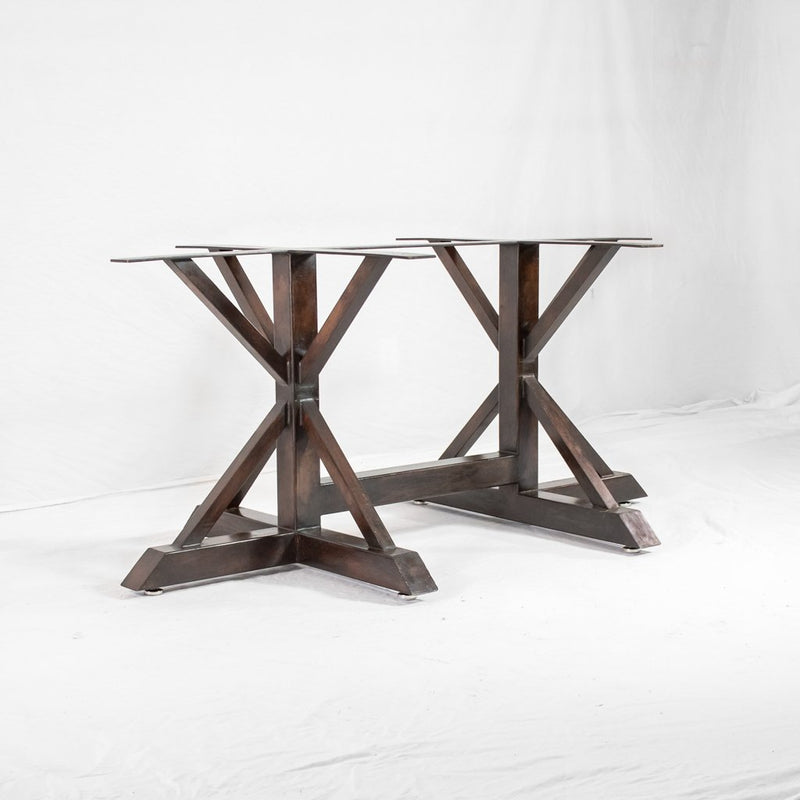Transform Your Dining Space with Stylish Dining Room Table Legs
Transform Your Dining Space with Stylish Dining Room Table Legs
Blog Article
From Traditional to Modern: Locate the Perfect Dining-room Table Legs for Your Design
The selection of dining area table legs plays a pivotal duty in defining the total personality of your space, linking the space in between conventional workmanship and modern-day appearances. While traditional designs such as cabriole and turned legs evoke a feeling of ageless class, contemporary designs like hairpin and geometric options provide a possibility for striking aesthetic interest. Evaluating the best balance in between these designs requires a nuanced understanding of your existing decor and personal taste. As you think about these aspects, the question continues to be: just how can you flawlessly incorporate these diverse leg designs to develop a harmonious eating experience?
Recognizing Table Leg Styles
The range of dining-room table leg designs can substantially affect both the appearances and capability of the room. Each leg design adds unique functional functions and aesthetic aspects, accommodating diverse design preferences and usage requirements. Understanding these designs is critical for picking the right table that straightens with your total indoor layout vision.
For example, tapered legs provide a clean, timeless look that can boost a space's style, while stand bases give security and make the most of legroom, making them perfect for smaller areas. Hairpin legs, a characteristic of mid-century modern layout, introduce an industrial panache, permitting an airy, open feeling. Trestle legs stimulate rustic beauty, giving durable support and a sense of eternity.
Additionally, the selection of products plays a considerable function. Wooden legs can bring warmth and texture, whereas metal options often convey a streamlined, contemporary vibe. Inevitably, comprehending table leg designs is crucial for developing a cohesive eating area that shows individual style while ensuring practicality and convenience. By thoughtfully considering these elements, you can improve both the functional and visual allure of your dining area.
Conventional Table Leg Options
When selecting dining-room table legs, traditional alternatives frequently embody classic beauty and craftsmanship. These designs mirror a rich heritage and a commitment to top quality, making them suitable for those who appreciate traditional visual appeals.
One of one of the most legendary conventional leg designs is the cabriole leg, characterized by its graceful rounded shape. This design usually includes ornamental makings and is most commonly discovered in Queen Anne and Chippendale furniture. Another popular alternative is the transformed leg, which boasts a series of smooth, rounded shapes that provide a timeless appearance while keeping stability.
Moreover, the straight leg, while easy, uses a sturdy and basic framework that can mix seamlessly with a range of tabletop styles. For those attracted to ornate outlining, claw-and-ball feet legs evoke a sense of grandeur and can serve as a stunning focal point in any dining area.
Last but not least, stand bases, although not strictly legs, give an alternative typical option that permits adequate legroom and can be beautifully carved. Each of these standard leg styles adds to the overall atmosphere of a dining-room, weding feature with visual allure.

Modern Table Leg Layouts
Modern table leg styles provide a varied array of designs that highlight read the article ingenious products and tidy lines. These styles commonly focus on capability while working as striking centerpieces within a dining space. Minimal aesthetics prevail, with legs crafted from materials such as steel, glass, and engineered timber, which add to a ventilated and contemporary feel.
One popular style is the barrette leg, identified by its slim, conical structure that offers stability without frustrating the tabletop (dining room table legs). This design is frequently discovered in mid-century modern-day furniture and can easily complement numerous table shapes. One more fad is making use of geometric forms, where legs might take on angular or unbalanced types, adding visual interest and a touch of artistry

Blending Styles for Special Areas
Frequently, home owners seek to develop special dining areas that reflect their personal style by mixing different layout components. This technique allows for the consolidation of varied looks, causing an unified yet distinctive atmosphere. Matching a rustic wooden table with sleek, modern-day metal legs can produce a captivating comparison that raises the room's overall charm.
Additionally, incorporating vintage table legs with modern tabletops can evoke a feeling of background while preserving a modern perceptiveness. Such combinations not only display specific taste however likewise encourage creativity, permitting house owners to curate an area that really feels both personal and inviting.
Shade plays an essential role in a knockout post this blending procedure; picking table legs that enhance or comparison with the existing color design can boost aesthetic rate of interest. As an example, whitewashed legs can soften the boldness of a dark table surface area, developing a well balanced aesthetic.
Tips for Selecting the Right Legs
Selecting the right table legs is important for achieving both performance and aesthetic charm in your dining room. Begin by thinking about the overall style of your space. Conventional settings gain from legs that feature intricate makings or turned designs, while modern areas might require smooth, minimal styles.
Next, assess the elevation and security of the legs. dining room table legs. Conventional table vary between 28 to 30 inches in height, so make sure the legs enhance this measurement for comfort. look what i found Furthermore, robust materials, such as hardwood or steel, can improve stability and long life
Review the leg shape too-- alternatives include directly, tapered, or pedestal designs. Straight legs offer a traditional look, while conical legs can add a touch of elegance. Pedestal bases offer adequate legroom and are perfect for smaller sized rooms.
Final Thought
In recap, picking the excellent eating room table legs needs careful factor to consider of both typical and modern designs. By balancing leg style, elevation, and product with the general decor, a cohesive and welcoming ambience can be attained.
The range of dining area table leg styles can dramatically affect both the appearances and performance of the room. Inevitably, understanding table leg styles is crucial for producing a cohesive dining area that mirrors personal style while making certain practicality and convenience.One of the most iconic standard leg designs is the cabriole leg, characterized by its stylish bent shape. Straight legs use a traditional appearance, while tapered legs can add a touch of style.In summary, selecting the excellent eating area table legs requires cautious consideration of both traditional and modern styles.
Report this page